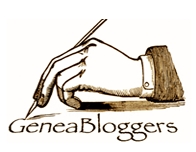I have been asked why I decided to go into archives. My answer is that archival science provides me with an academic challenge while combining my love of art, genealogy, and writing. That’s right. Writing!
Once a collection is processed, the final step before making it accessible to patrons is to write a finding aid. There are many elements to a finding aid, the least of which is its digital link to a library’s or repository’s catalog. All of those little linking details, like the donor’s name, the date of its contents, its reference number, the citation information, and its physical description are pretty mundane, but its historical note, creator’s biography, scope summary, and detailed description of its contents are where the archivist’s artistry with words gets put to use.
Hunter claims that there are five characteristics to a good finding aid: the information provided should be intended for the researcher, it should be objective about the collection, it should be useful to a wide range of researchers, it should be clear and concise, and it should be readable and efficient.
Let me give you an example of a wonderful finding aid (FA) written by fellow ETSU grad and the current archivist for the City of Kingsport, Brianne Wright. Brianne described the James Agee Film Project Photographs, 1875-1956, down to the item level. This is very unusual, but the Archives of Appalachia felt that the subjects of Mr. Agee’s photographs were so illustrative of the archives’ collecting mission that its patrons would benefit from that kind of specificity. Scroll through this FA and be amazed.
Challenges to writing an efficient finding aid include highlighting the items that connect the collection to the history that the repostitory is mandated to maintain and identifying other items that a researcher would find useful. The archivist must choose key words and descriptive phrases that a patron would likely use in a search. The archivist is part Shakespeare, part mind reader.
At the Church History Library (CHL) in Salt Lake City, I was shown a finding aid as a sort of template, a standard to aim for, just as I was beginning to create the finding aid for the Hugh B. Brown Family Papers. This finding aid was written by veteran archivist Christy Best for the Richards family collection, 1837-1961. This catalog entry was a thing of beauty. The Richards papers are pivotol to the collecting policy of the CHL: To collect items about The Church of Jesus Christ of Latter-day Saints and its members. Franklin D. Richards’ journals and letters documented both aspects of the policy and the family’s papers span a long and critical period of the church’s history. Ms. Best had to do careful reading of the materials and determine specific names, events, and places that would be significant to the church’s history and to researchers. The layout of the online aid is pretty ingenius. As you click down the series titles on the left, the item inventory in the center column adjusts and descriptions in the right hand column correlate. It is monumental, concise, clever. Fantastic.
While I have worked on six collections for the Kingsport Archives, I have only contributed to, or written, four finding aids. I learn something new each time and each collection has its own challenges.
Muriel C. Spoden Collection, 1800-2000, KCMC 516
Business and Professional Women of Kingsport Records, 1940-2005, KCMC 541
S. A. Dorsett Papers, 1918-1958, KCMC 548
Huffaker Family Collection, 1929-1959, KCMC 75
For instance, the Huffaker Collection did not contain very much historical information on the creator. The Dorsett Papers were even more mysterious. We had to do a lot of research in order to write the historical note/biographical element of the aid. We used the newspaper archive, census records, old city directories and other collections to sketch Mr. Dorsett’s life.
 Next, I offer one last finding aid for your enjoyment. The James A. Adams Civil War Letters, 1862–1865, #SC0003 is housed at the Indiana Historical Society in Indianapolis. This is an organization and facility that I really admire. What is interesting about this finding aid is that the processors found an intriguing middle ground between simply describing the letters as a to/from list, and transcribing them completely. Instead, they might quote a line or two, list important people and events in the letter, and even find a balance between family affections and war realities. This FA is a thing of beauty. I get excited about this stuff!
Next, I offer one last finding aid for your enjoyment. The James A. Adams Civil War Letters, 1862–1865, #SC0003 is housed at the Indiana Historical Society in Indianapolis. This is an organization and facility that I really admire. What is interesting about this finding aid is that the processors found an intriguing middle ground between simply describing the letters as a to/from list, and transcribing them completely. Instead, they might quote a line or two, list important people and events in the letter, and even find a balance between family affections and war realities. This FA is a thing of beauty. I get excited about this stuff!
What finding aids inspire you? Use the comment field below to share your thoughts and we can all go on a virtual archiventure.



4 Responses to Archives: Writing, an Archivist’s Tool